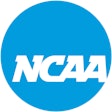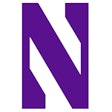Copyright 2018 Gannett Company, Inc.
All Rights Reserved
USA TODAY
The power dynamics of college football have always been ridiculously one-sided. The coach controls the roster, the coach controls the playing time and often, if the player wants to leave, the coach controls when and where they can go.
But Kelly Bryant's decision to leave No. 2 Clemson after losing his starting job to freshman Trevor Lawrence this week was a message that will reverberate across every locker room in the country. Thanks to a more liberal NCAA redshirt rule — one that coaches pushed for in near-unanimity, by the way — the power dynamic has shifted. Just like that, the quarterbacks now hold all the cards.
"I'm not sure if everybody thought about it going into, but immediately when I saw the rule, I knew quarterbacks were going to be in a power position," said Quincy Avery, a private quarterbacks coach out of Atlanta who has worked with high-profile players such as Georgia's Justin Fields and Alabama's Jalen Hurts. "It's something that's never happened before."
When the NCAA announced this year it would allow players to compete in up to four games while retaining that year of eligibility, coaches celebrated. In theory, the rule would allow them the freedom to take a look at some of their freshmen in game situations or be able to backfill for short-term injuries late in the season without burning someone's redshirt.
What never came up in the discussion, however, was the inevitability that all kinds of players, but particularly quarterbacks, would use that four-game mark as a gauge for whether they should transfer.
Since late last week, the point at which most teams were playing their fourth game, around a dozen players announced their intention to transfer and preserve that year of eligibility. Among them were a couple of big names, including Auburn starting receiver Nate Craig-Meyers and Oklahoma State receiver Jalen McCleskey.
Bryant is both the biggest name to use the new rule thus far and the player whose departure could most impact the College Football Playoff race because it leaves Clemson in a precarious position if Lawrence suffers an injury.
"As a coach, sometimes you have to make tough decisions that are in the best interest of your team, and this is one of those decisions and I'd make it all over again because I believe it's what's right for our team," Clemson coach Dabo Swinney said. "I feel like Kelly would have continued to help us win and play a lot, but that's not what he wanted to do."
Swinney did nothing wrong here. Though Lawrence was arguably the most celebrated quarterback recruit ever out of Georgia, it was predictable that Bryant's experience would give him the edge coming out of camp. It was also predictable that Lawrence would eventually surpass him because the ceiling for that offense was much higher when he was in the game. It would have been hard to watch Clemson's win last Saturday at Georgia Tech, when Bryant started slowly and Lawrence moved the offense at will, and disagree with Swinney making the change now.
But it would be a mistake to suggest this situation is a one-off. To the contrary, this will have consequences for how every high-profile program runs its quarterback room.
Think about how this rule might have impacted Ohio State in 2014 when Cardale Jones went from third-stringer to winning a national championship after injuries to Braxton Miller and J.T. Barrett. Or last season, when the Buckeyes were stubbornly playing Barrett over a quarterback with more upside in Dwayne Haskins.
Though it appears Jalen Hurts is staying at Alabama to be Tua Tagovailoa's backup for the rest of this season, the possibility he might leave has been the elephant in the room all season. Even at Georgia, where there's no talk of a controversy right now between Jake Fromm and highly rated freshman Justin Fields, it's virtually certain that the situation will come to a head at some point.
While it's nothing new for quarterbacks to transfer if they're not starting, the new redshirt rule could force coaching staffs to change the way they recruit. In the past, the elite programs had no qualms about bringing one five-star quarterback after another, even with the understanding that one of them would probably transfer because they weren't playing. But that was always an offseason problem, not something that could bubble up one-third of the way through the season.
The reality of what happened at Clemson on Wednesday is that Swinney lost his insurance policy. If Lawrence gets hurt, the Tigers' season is probably unsalvageable.
In the past, coaches would say whatever they needed to say, make whatever promises they had to make to ensure if one quarterback got hurt that they had another one ready to play. But as Avery pointed out, that might not be good enough anymore.
"I understand college coaches have a job to do to get the best players there, but a lot of their inability to be frank and straightforward and let them know what's going on up front caused a lot of issues," Avery said. "It's been problematic for quarterbacks for quite some time, and it's really the only position where you only get one guy on the field and it was stressful for all parties involved because if played in one game they were stuck."
Now the NCAA has given them recourse to get unstuck, and with the quarterback position in particular, you can't blame a kid for deciding he'd be better off somewhere else.
Make no mistake, what happened with Bryant is an unintended consequence of coaches pushing for a new rule that would supposedly help them build greater depth. Instead, it's being used against them to put their most important position at risk.
Given how the power dynamic has been stacked against the student-athletes forever in college sports, nobody should shed a tear for this unexpected swing in the opposite direction.
Read More of Today's AB Headlines
Subscribe to Our Daily E-Newsletter
Terms and Conditions Privacy Policy



































